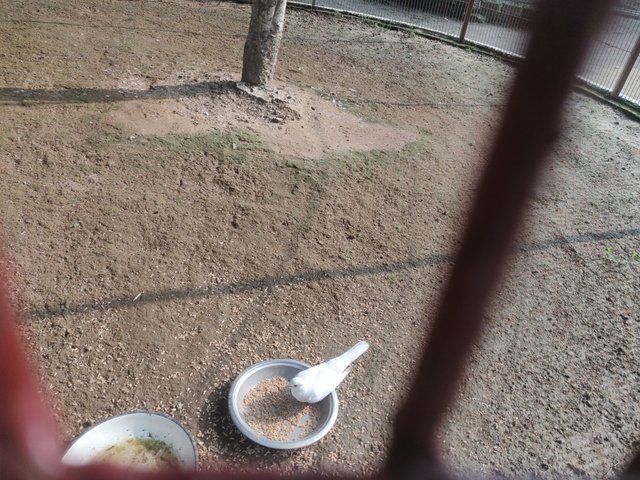
Pigeons have served key roles as food, pets, holy animals, post carriers, and more for thousands of years. The earliest record mention of pigeons comes from Mesopotamia some 5,000 years ago. Ancient Egyptians kept vast quantities of them, and would sacrifice tens of thousands at a time for ritual purposes. Akbar the Great travelled with a coterie of thousands of pigeons. They were introduced to the Americas about 400 years ago, as they were not native to the New World. Around the 18th century, interest in fancy pigeons began, and breeders greatly expanded the variety of pigeons.[5]
Despite the long history of pigeons, little is known about their initial domestication. Which subspecies of C. livia was the progenitor of domestics, exactly when, how many times, where and how they were domesticated, and how they spread, remains unknown. Their fragile bones, and similarity to wild birds makes the fossil record a poor tool for their study. Thus, most of what is known comes from written accounts, which almost certainly do not cover the first stages of domestication. Because domestic and feral pigeons have extensively interbred with wild pigeons, wild-type pigeons may not truly exist anymore, or are nearly extinct. This frequent breeding further muddies the true origins of pigeons.[5]
From a genetic perspective, there are two loose ancestral clades of pigeons, but there is striking genetic homogeneity due to frequent interbreeding and human directed cross-breeding. The first ancestral clade contains pigeons with exaggerated crops, tails, manes; the second contains tumblers (the most diverse group), homing pigeons, owl pigeons, and those with exaggerated wattles.[5]
Source
The history of photography began in remote antiquity with the discovery of two critical principles: camera obscura image projection and the observation that some substances are visibly altered by exposure to light. There are no artifacts or descriptions that indicate any attempt to capture images with light sensitive materials prior to the 18th century.
Around 1717, Johann Heinrich Schulze captured cut-out letters on a bottle of a light-sensitive slurry, but he apparently never thought of making the results durable. Around 1800, Thomas Wedgwood made the first reliably documented, although unsuccessful attempt at capturing camera images in permanent form. His experiments did produce detailed photograms, but Wedgwood and his associate Humphry Davy found no way to fix these images.
In the mid-1820s, Nicéphore Niépce first managed to fix an image that was captured with a camera, but at least eight hours or even several days of exposure in the camera were required and the earliest results were very crude. Niépce's associate Louis Daguerre went on to develop the daguerreotype process, the first publicly announced and commercially viable photographic process. The daguerreotype required only minutes of exposure in the camera, and produced clear, finely detailed results. The details were introduced to the world in 1839, a date generally accepted as the birth year of practical photography.[2][3] The metal-based daguerreotype process soon had some competition from the paper-based calotype negative and salt print processes invented by William Henry Fox Talbot and demonstrated in 1839 soon after news about the daguerreotype reached Talbot. Subsequent innovations made photography easier and more versatile. New materials reduced the required camera exposure time from minutes to seconds, and eventually to a small fraction of a second; new photographic media were more economical, sensitive or convenient. Since the 1850s, the collodion process with its glass-based photographic plates combined the high quality known from the Daguerreotype with the multiple print options known from the calotype and was commonly used for decades. Roll films popularized casual use by amateurs. In the mid-20th century, developments made it possible for amateurs to take pictures in natural color as well as in black-and-white.
The commercial introduction of computer-based electronic digital cameras in the 1990s soon revolutionized photography. During the first decade of the 21st century, traditional film-based photochemical methods were increasingly marginalized as the practical advantages of the new technology became widely appreciated and the image quality of moderately priced digital cameras was continually improved. Especially since cameras became a standard feature on smartphones, taking pictures (and instantly publishing them online) has become a ubiquitous everyday practice around the world.
Source